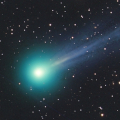
|
Now it is 6.0 mag (Oct. 9, Virgilio Gonano). It brightens up to 4 mag, but it will turn to fade out rapidly after that. In the Northern Hemisphere, it will be unobservable in November. In the Southern Hemisphere, it is not observable now, but it will appear in December.
Date(TT) R.A. (2000) Decl. Delta r Elong. m1 Best Time(A, h)
Oct. 11 11 20.23 42 20.7 0.743 0.832 54 5.6 4:38 (237, 29)
Oct. 18 13 23.10 36 39.7 0.612 0.723 46 4.5 4:44 (233, 12)
|
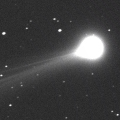
|
Now it is 6.2 mag (Oct. 5, Marco Goiato). It will fade out rapidly after this. In the Northern Hemisphere, it will be getting higher gradually. In the Southern Hemisphere, it stays observable in good condition.
Date(TT) R.A. (2000) Decl. Delta r Elong. m1 Best Time(A, h)
Oct. 11 16 18.70 -16 34.4 0.326 0.818 48 6.2 18:54 ( 57, 15)
Oct. 18 18 14.58 -14 29.9 0.265 0.936 69 6.4 18:45 ( 38, 32)
|

|
It brightened up to 10.6 mag until mid September (Sept. 16, Thomas Lehmann). It will fade out rapidly after this. Now it is not observable. It will be observable soon.
Date(TT) R.A. (2000) Decl. Delta r Elong. m1 Best Time(A, h)
Oct. 11 12 25.62 -11 15.2 1.271 0.343 10 7.6 4:38 (275,-13)
Oct. 18 12 3.61 -6 57.1 1.155 0.434 21 8.4 4:44 (280, 1)
|
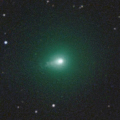
|
Third interstellar object in history following 1I/'Oumuamua and 2I/Borisov. The eccentricity is extremely big as 6. It approaches to Sun down to 1.38 a.u. in late October. Now it is 11.8 mag (Sept. 24, Michael Jager). It will turn to fade out rapidly after the peak. Now it is not observable. It will appear in November.
Date(TT) R.A. (2000) Decl. Delta r Elong. m1 Best Time(A, h)
Oct. 11 14 6.32 -9 37.8 2.454 1.515 15 11.8 18:54 ( 83, -7)
Oct. 18 13 52.85 -8 41.0 2.409 1.420 5 11.4 18:45 ( 89,-13)
|
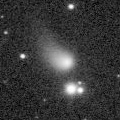
|
It is expected to brighten up to 5 mag in January. Now it is 13.1 mag (Sept. 21, Seiichi Yoshida). It will brighten rapidly after this. It will be unobservable soon in the Southern Hemisphere, or in December in the Northern Hemisphere. But it will be observable again in January in the Southern Hemisphere.
Date(TT) R.A. (2000) Decl. Delta r Elong. m1 Best Time(A, h)
Oct. 11 16 21.09 18 20.0 2.390 1.985 54 11.9 18:54 ( 88, 36)
Oct. 18 16 29.02 14 59.0 2.352 1.882 50 11.6 18:45 ( 86, 32)
|
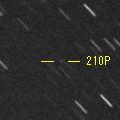
|
It is expected to brighten up to 8 mag from late autumn to early winter. Now it is 16.3 mag (Oct. 2, ATLAS Chile). It brightens up to 8.5 mag, but it will turn to fade out rapidly after that. It will be unobservable soon in the Northern Hemisphere, or in November in the Southern Hemisphere. But it will be observable again in November in the Northern Hemisphere, or in December in the Southern Hemisphere. It is much fainter than this ephemeris recently.
Date(TT) R.A. (2000) Decl. Delta r Elong. m1 Best Time(A, h)
Oct. 11 18 1.68 -41 41.6 0.544 0.993 73 12.6 18:54 ( 24, 7)
Oct. 18 17 40.54 -41 11.0 0.514 0.891 63 11.8 18:45 ( 31, 4)
|
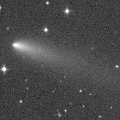
|
Now it is brighter than originally expected. Now it is 13.1 mag (Sept. 30, Hiroshi Abe). It stays 13 mag for a while. It stays observable in good condition. It is expected to brighten up to 12 mag and to be observable in good condition from autumn to winter. A 19-mag fragment was found on Oct. 3.
Date(TT) R.A. (2000) Decl. Delta r Elong. m1 Best Time(A, h)
Oct. 11 4 16.17 0 19.2 1.396 2.192 131 12.6 2:59 ( 0, 55)
Oct. 18 4 15.04 0 51.5 1.332 2.179 138 12.5 2:30 ( 0, 56)
|
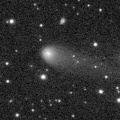
|
Now it is 13.9 mag (Sept. 23, Osamu Miyazaki). It stays 14 mag for a while. In the Northern Hemisphere, it stays observable in good condition. It locates somewhat low in the Southern Hemisphere.
Date(TT) R.A. (2000) Decl. Delta r Elong. m1 Best Time(A, h)
Oct. 11 3 35.71 26 28.5 3.066 3.876 139 13.3 2:19 ( 0, 82)
Oct. 18 3 34.38 26 32.1 3.019 3.887 146 13.3 1:50 ( 0, 82)
|
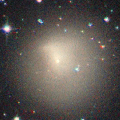
|
In the Northern Hemisphere, it will be getting higher gradually. It locates somewhat low in the Southern Hemisphere. But it will become high in winter.
Date(TT) R.A. (2000) Decl. Delta r Elong. m1 Best Time(A, h)
Oct. 11 11 3.88 1 34.7 7.129 6.298 31 14.3 4:38 (276, 12)
Oct. 18 11 8.07 1 2.3 7.065 6.298 37 14.2 4:44 (281, 17)
|
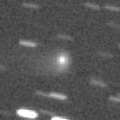
|
It is expected to brighten up to 13 mag in early summer in 2026. Now it is 14.4 mag (Sept. 12, Andrew Pearce). It stays 14 mag for a while. It will be getting lower gradually after this, and it will be unobservable in January in the Northern Hemisphere, or in December in the Southern Hemisphere. But it will be observable again in January in the Northern Hemisphere.
Date(TT) R.A. (2000) Decl. Delta r Elong. m1 Best Time(A, h)
Oct. 11 19 24.49 9 14.9 3.710 3.940 95 14.3 18:54 ( 27, 62)
Oct. 18 19 20.18 7 43.0 3.808 3.914 88 14.3 18:45 ( 36, 58)
|
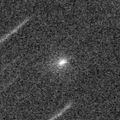
|
It brightened very rapidly. Now it is 14.4 mag (Sept. 17, Ken-ichi Kadota). Fading rapidly. It will be fainter than 18 mag soon. It will never be observable after this.
Date(TT) R.A. (2000) Decl. Delta r Elong. m1 Best Time(A, h)
Oct. 11 11 52.90 -9 15.3 1.475 0.608 17 14.4 4:38 (278, -4)
Oct. 18 12 26.99 -13 43.6 1.589 0.690 16 16.1 4:44 (282, -7)
|

|
Now it is 14.6 mag (Sept. 16, Thomas Lehmann). It stays 15 mag for a while. It will be unobservable soon in the Southern Hemisphere, or in November in the Northern Hemisphere. But it will be observable again in January in the Southern Hemisphere, or in December in the Northern Hemisphere.
Date(TT) R.A. (2000) Decl. Delta r Elong. m1 Best Time(A, h)
Oct. 11 15 44.93 -1 9.8 6.549 5.824 40 14.5 18:54 ( 75, 18)
Oct. 18 15 50.17 -1 13.3 6.632 5.851 35 14.5 18:45 ( 78, 15)
|
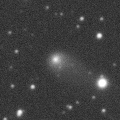
|
Now it is 15.6 mag (Sept. 28, Alfons Diepvens). It stays 15 mag for a while. In the Northern Hemisphere, it stays observable in good condition. It locates somewhat low in the Southern Hemisphere.
Date(TT) R.A. (2000) Decl. Delta r Elong. m1 Best Time(A, h)
Oct. 11 9 2.16 19 6.0 5.825 5.480 65 14.7 4:38 (279, 46)
Oct. 18 9 6.79 19 15.9 5.724 5.483 71 14.7 4:44 (284, 52)
|

|
Now it is 17.7 mag (July 24, Thomas Lehmann). It will brighten rapidly after this. Now it is not observable. It will appear in January in the Southern Hemisphere, or in December in the Northern Hemisphere.
Date(TT) R.A. (2000) Decl. Delta r Elong. m1 Best Time(A, h)
Oct. 11 13 22.31 -6 54.5 3.098 2.104 4 15.2 18:54 ( 91,-15)
Oct. 18 13 36.39 -8 24.7 3.053 2.058 1 15.0 18:45 ( 91,-16)
|
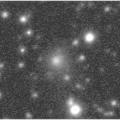
|
It will brighten up to 13 mag in 2026. Now it is 15.3 mag (Sept. 30, Alfons Diepvens). It stays 15 mag for a while. It will be getting lower gradually after this, and it will be unobservable in December. But it will be observable again in January in the Northern Hemisphere.
Date(TT) R.A. (2000) Decl. Delta r Elong. m1 Best Time(A, h)
Oct. 11 18 32.13 -10 41.3 5.273 5.206 80 15.0 18:54 ( 33, 38)
Oct. 18 18 33.57 -10 16.2 5.347 5.168 74 15.0 18:45 ( 38, 37)
|
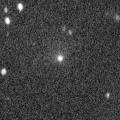
|
Very large comet. It is expected to brighten up to 13 mag in 2031. Now it is 15.3 mag (Sept. 29, Andrew Pearce). It stays 15 mag for a while. In the Northern Hemisphere, it is not observable now. In the Southern Hemisphere, it stays observable in good condition. In the Northern Hemisphere, it is not observable until 2030.
Date(TT) R.A. (2000) Decl. Delta r Elong. m1 Best Time(A, h)
Oct. 11 5 42.73 -72 20.1 14.633 14.659 89 15.0 4:23 ( 0,-17)
Oct. 18 5 41.99 -72 47.8 14.626 14.636 88 15.0 3:55 ( 0,-18)
|

|
Now it is 16.3 mag (Sept. 28, Alfons Diepvens). It stays 15 mag for a while. In the Northern Hemisphere, it stays observable in good condition. In the Southern Hemisphere, it will be getting higher gradually.
Date(TT) R.A. (2000) Decl. Delta r Elong. m1 Best Time(A, h)
Oct. 11 9 45.13 6 6.7 2.987 2.491 51 15.0 4:38 (285, 30)
Oct. 18 9 55.96 4 50.0 2.929 2.501 55 15.0 4:44 (290, 34)
|
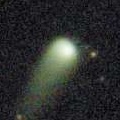
|
It was observed at 12-13 mag for a long time in 2024. Now it is 15.3 mag (Sept. 23, ATLAS-MLO, Mauna Loa). Fading slowly. In the Northern Hemisphere, it stays observable in good condition. In the Southern Hemisphere, it will be unobservable in December.
Date(TT) R.A. (2000) Decl. Delta r Elong. m1 Best Time(A, h)
Oct. 11 23 8.20 50 44.2 4.310 5.009 129 15.1 21:47 (180, 74)
Oct. 18 22 57.95 48 56.3 4.358 5.049 129 15.2 21:09 (180, 76)
|
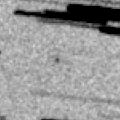
|
It will brighten up to 8 mag in winter, and will be observable in good condition. Now it is 17.6 mag (Sept. 29, Katsumi Yoshimoto). Brightening rapidly. In the Northern Hemisphere, it stays observable in good condition. It locates somewhat low in the Southern Hemisphere. But it will become high in winter.
Date(TT) R.A. (2000) Decl. Delta r Elong. m1 Best Time(A, h)
Oct. 11 6 58.28 19 31.9 1.235 1.639 93 16.1 4:38 (315, 69)
Oct. 18 7 19.94 19 48.2 1.135 1.583 95 15.3 4:44 (321, 71)
|
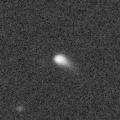
|
Now it is 15.1 mag (Oct. 2, ATLAS Chile). It stays 15 mag for a while. It stays extremely low in the Northern Hemisphere. But it will become high in autumn. In the Southern Hemisphere, it stays observable in good condition. It is expected to brighten up to 12 mag in winter between 2026 and 2027.
Date(TT) R.A. (2000) Decl. Delta r Elong. m1 Best Time(A, h)
Oct. 11 3 16.72 -45 26.2 5.572 6.132 119 15.6 1:59 ( 0, 10)
Oct. 18 3 13.34 -45 47.1 5.528 6.090 120 15.5 1:28 ( 0, 9)
|
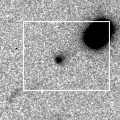
|
It is expected to brighten up to 13.5 mag and to be observable in good condition in 2026 spring. Now it is 16.8 mag (Aug. 12, ATLAS South Africa). Brightening slowly. In the Northern Hemisphere, it is not observable now, but it will appear in December. It stays extremely low in the Southern Hemisphere. But it will become high in winter.
Date(TT) R.A. (2000) Decl. Delta r Elong. m1 Best Time(A, h)
Oct. 11 13 33.61 -59 16.1 2.524 2.076 52 15.7 18:54 ( 38,-34)
Oct. 18 13 52.07 -57 2.7 2.557 2.026 47 15.6 18:45 ( 40,-34)
|

|
Now it is 15.0 mag (Sept. 15, Purple Mountain Observatory, XuYi Station). Fading slowly. It stays observable in good condition.
Date(TT) R.A. (2000) Decl. Delta r Elong. m1 Best Time(A, h)
Oct. 11 22 40.47 -10 31.5 1.970 2.809 140 15.9 21:20 ( 0, 45)
Oct. 18 22 38.67 -10 4.4 2.033 2.808 132 16.0 20:51 ( 0, 45)
|

|
It will brighten up to 12 mag in 2026 summer. Now it is 16.2 mag (Sept. 18, Francois Kugel). Brightening slowly. In the Northern Hemisphere, it stays observable in good condition. In the Southern Hemisphere, it will be getting lower gradually after this, and it will be unobservable in January.
Date(TT) R.A. (2000) Decl. Delta r Elong. m1 Best Time(A, h)
Oct. 11 19 56.67 -13 46.6 2.440 2.804 100 16.0 18:54 ( 6, 41)
Oct. 18 20 0.95 -13 53.0 2.502 2.772 94 15.9 18:45 ( 10, 41)
|

|
It brightened up to 12.7 mag in 2024 summer (Aug. 7, 2024, Thomas Lehmann). Now it is 15.7 mag (Sept. 23, ATLAS-MLO, Mauna Loa). Fading slowly. In the Northern Hemisphere, it stays observable in good condition. In the Southern Hemisphere, it will never be observable after this.
Date(TT) R.A. (2000) Decl. Delta r Elong. m1 Best Time(A, h)
Oct. 11 22 23.63 57 4.6 3.573 4.173 120 16.0 21:02 (180, 68)
Oct. 18 22 19.90 56 18.4 3.636 4.228 120 16.1 20:31 (180, 69)
|
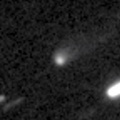
|
Now it is 16.3 mag (Sept. 25, ATLAS South Africa). It stays 17 mag for a while. It will be unobservable in January.
Date(TT) R.A. (2000) Decl. Delta r Elong. m1 Best Time(A, h)
Oct. 11 18 50.97 -30 57.6 2.926 2.983 83 16.1 18:54 ( 19, 21)
Oct. 18 18 59.43 -30 39.5 3.025 2.990 78 16.2 18:45 ( 21, 21)
|

|
Now it is 17.0 mag (Sept. 23, ATLAS-HKO, Haleakala). It stays 16 mag for a while. In the Northern Hemisphere, it stays observable in good condition. In the Southern Hemisphere, it will be unobservable in December.
Date(TT) R.A. (2000) Decl. Delta r Elong. m1 Best Time(A, h)
Oct. 11 8 45.92 32 27.1 4.190 4.012 72 16.3 4:38 (262, 55)
Oct. 18 8 49.44 33 52.5 4.091 4.029 79 16.3 4:44 (262, 61)
|

|
Now it is 16.6 mag (Oct. 2, ATLAS-MLO, Mauna Loa). It stays 16 mag for a while. It stays observable in good condition.
Date(TT) R.A. (2000) Decl. Delta r Elong. m1 Best Time(A, h)
Oct. 11 8 46.98 -11 11.8 6.954 6.573 63 16.4 4:38 (311, 29)
Oct. 18 8 49.92 -11 23.5 6.868 6.575 68 16.4 4:44 (318, 33)
|
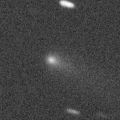
|
It brightened up to 12.1 mag in early summer (June 10, Taras Prystavski). Now it is 15.2 mag (Oct. 2, C. Gerhard). Fading slowly. It will be fainter than 18 mag in January. In the Northern Hemisphere, it stays observable in good condition. In the Southern Hemisphere, it will be getting higher gradually.
Date(TT) R.A. (2000) Decl. Delta r Elong. m1 Best Time(A, h)
Oct. 11 8 40.95 13 18.9 2.192 2.049 68 16.4 4:38 (290, 47)
Oct. 18 8 49.96 12 59.4 2.166 2.107 73 16.6 4:44 (296, 51)
|
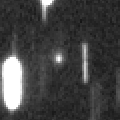
|
Now it is 16.7 mag (Sept. 18, Francois Kugel). It stays 17 mag for a while. In the Northern Hemisphere, it stays observable in good condition. In the Southern Hemisphere, it will be getting lower gradually after this, and it will be unobservable in February.
Date(TT) R.A. (2000) Decl. Delta r Elong. m1 Best Time(A, h)
Oct. 11 20 3.13 -15 45.0 1.655 2.103 102 16.6 18:54 ( 3, 39)
Oct. 18 20 11.36 -15 14.5 1.716 2.088 97 16.5 18:45 ( 7, 40)
|

|
Now it is 16.0 mag (Sept. 12, Alfons Diepvens). It stays 17 mag for a while. It locates somewhat low in the Northern Hemisphere. But it will become high in winter. In the Southern Hemisphere, it will never be observable after this.
Date(TT) R.A. (2000) Decl. Delta r Elong. m1 Best Time(A, h)
Oct. 11 14 9.53 63 17.0 4.614 4.396 71 16.5 18:54 (148, 30)
Oct. 18 14 29.29 63 20.8 4.582 4.407 73 16.5 18:45 (149, 30)
|

|
It brightened very rapidly, and it became brighter than expected. Now it is 15.8 mag (Sept. 27, Katsumi Yoshimoto). Fading slowly. It will be fainter than 18 mag in January. It stays observable in good condition.
Date(TT) R.A. (2000) Decl. Delta r Elong. m1 Best Time(A, h)
Oct. 11 0 30.64 -5 9.5 2.452 3.427 165 16.6 23:09 ( 0, 50)
Oct. 18 0 26.81 -5 31.9 2.491 3.436 158 16.7 22:38 ( 0, 50)
|

|
Now it is 16.9 mag (Sept. 28, Alfons Diepvens). It stays 17 mag for a while. In the Northern Hemisphere, it stays observable in good condition. It stays extremely low in the Southern Hemisphere.
Date(TT) R.A. (2000) Decl. Delta r Elong. m1 Best Time(A, h)
Oct. 11 5 15.59 48 56.6 3.366 3.866 112 17.0 3:58 (180, 76)
Oct. 18 5 16.50 49 49.8 3.283 3.860 118 16.9 3:32 (180, 75)
|
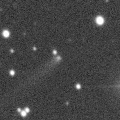
|
Now it is 16.9 mag (July 13, Taras Prystavski). It stays 17 mag for a while. In the Northern Hemisphere, it will be unobservable soon. But it will be observable again in October. In the Southern Hemisphere, it will be getting higher gradually.
Date(TT) R.A. (2000) Decl. Delta r Elong. m1 Best Time(A, h)
Oct. 11 11 0.44 -22 36.2 6.324 5.522 33 16.9 4:38 (296, -2)
Oct. 18 11 1.67 -22 49.7 6.290 5.540 38 16.9 4:44 (301, 3)
|
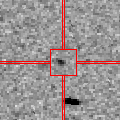
|
Now it is 17.3 mag (Oct. 1, ATLAS-MLO, Mauna Loa). It stays 17 mag for a while. It stays observable in good condition.
Date(TT) R.A. (2000) Decl. Delta r Elong. m1 Best Time(A, h)
Oct. 11 22 17.55 -22 23.1 1.367 2.147 129 17.0 20:57 ( 0, 33)
Oct. 18 22 17.10 -21 19.3 1.401 2.119 123 16.9 20:29 ( 0, 34)
|

|
Now it is 16.9 mag (Oct. 3, ATLAS-MLO, Mauna Loa). It stays 17 mag for a while. In the Northern Hemisphere, it stays observable in good condition. In the Southern Hemisphere, it will never be observable after this.
Date(TT) R.A. (2000) Decl. Delta r Elong. m1 Best Time(A, h)
Oct. 11 8 24.34 77 13.7 4.983 5.124 92 17.0 4:38 (191, 45)
Oct. 18 8 45.91 78 43.2 4.921 5.118 95 17.0 4:44 (189, 44)
|
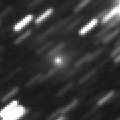
|
Very far object. Now it is 17.4 mag (July 26, ATLAS South Africa). It stays 17 mag for a while. In the Northern Hemisphere, it is not observable now, but it will appear in December. In the Southern Hemisphere, it stays observable in good condition.
Date(TT) R.A. (2000) Decl. Delta r Elong. m1 Best Time(A, h)
Oct. 11 0 38.85 -57 30.6 10.492 10.957 115 17.0 23:17 ( 0, -2)
Oct. 18 0 33.53 -57 15.9 10.554 10.970 112 17.0 22:45 ( 0, -2)
|
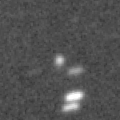
|
Brightening rapidly. It is expected to brighten up to 13 mag from 2027 to 2028. Now it is 16.2 mag (Sept. 23, Andrew Pearce). It stays 17 mag for a while. In the Northern Hemisphere, it stays observable in good condition. In the Southern Hemisphere, it will be getting lower gradually after this, and it will be unobservable in December.
Date(TT) R.A. (2000) Decl. Delta r Elong. m1 Best Time(A, h)
Oct. 11 21 40.70 23 6.0 6.613 7.276 128 17.0 20:20 ( 0, 78)
Oct. 18 21 37.36 22 47.0 6.649 7.236 122 17.0 19:49 ( 0, 78)
|
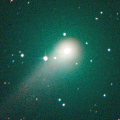
|
It was observed at 9-10 mag for a long time in 2023. It is fading very slowly. Now it is 16.6 mag (Sept. 14, ATLAS Chile). It stays 17 mag for a while. In the Northern Hemisphere, it will never be observable after this. In the Southern Hemisphere, it will be getting lower gradually. But it will be getting higher again after January.
Date(TT) R.A. (2000) Decl. Delta r Elong. m1 Best Time(A, h)
Oct. 11 18 53.43 -69 53.1 8.557 8.485 82 17.1 18:54 ( 7,-16)
Oct. 18 18 53.20 -69 15.8 8.690 8.535 77 17.1 18:45 ( 9,-16)
|
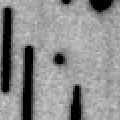
|
Now it is 17.5 mag (Sept. 23, Ken-ichi Kadota). Fading slowly. It will be fainter than 18 mag in December. In the Northern Hemisphere, it stays observable in good condition. In the Southern Hemisphere, it will never be observable after this.
Date(TT) R.A. (2000) Decl. Delta r Elong. m1 Best Time(A, h)
Oct. 11 19 30.99 79 40.4 1.651 2.044 97 17.2 18:54 (177, 45)
Oct. 18 18 54.71 72 21.6 1.655 2.024 96 17.2 18:45 (168, 51)
|

|
Now it is 17.7 mag (Sept. 18, Hidetaka Sato). It stays 17 mag for a while. It locates somewhat low in the Northern Hemisphere. In the Southern Hemisphere, it stays observable in good condition.
Date(TT) R.A. (2000) Decl. Delta r Elong. m1 Best Time(A, h)
Oct. 11 9 25.97 -18 14.6 4.958 4.451 54 17.2 4:38 (308, 17)
Oct. 18 9 31.48 -19 24.1 4.892 4.453 58 17.2 4:44 (314, 20)
|

|
Now it is 17.1 mag (Sept. 28, Alfons Diepvens). It stays 17 mag for a while. In the Northern Hemisphere, it stays observable in good condition. It stays extremely low in the Southern Hemisphere.
Date(TT) R.A. (2000) Decl. Delta r Elong. m1 Best Time(A, h)
Oct. 11 9 47.05 20 53.1 2.499 2.109 55 17.3 4:38 (270, 38)
Oct. 18 10 0.24 20 32.5 2.466 2.146 59 17.2 4:44 (273, 42)
|
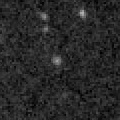
|
Now it is 17.7 mag (Aug. 30, J. Linder). It stays 17 mag for a while. In the Northern Hemisphere, it stays observable in good condition. In the Southern Hemisphere, it is not observable now.
Date(TT) R.A. (2000) Decl. Delta r Elong. m1 Best Time(A, h)
Oct. 11 11 12.64 69 47.6 4.266 4.193 79 17.4 4:38 (205, 36)
Oct. 18 11 15.95 70 4.2 4.166 4.161 82 17.3 4:44 (205, 39)
|
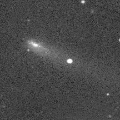
|
Now it is 15.8 mag (Oct. 3, ATLAS Chile). Fading slowly. It will be fainter than 18 mag in November. It stays observable in good condition.
Date(TT) R.A. (2000) Decl. Delta r Elong. m1 Best Time(A, h)
Oct. 11 3 59.57 3 45.7 1.785 2.601 136 17.3 2:42 ( 0, 59)
Oct. 18 3 56.03 3 22.9 1.762 2.630 143 17.4 2:11 ( 0, 58)
|
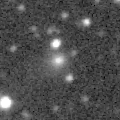
|
Now it is 17.0 mag (Sept. 25, ATLAS-MLO, Mauna Loa). Fading slowly. It will be fainter than 18 mag in December. In the Southern Hemisphere, it will be getting lower gradually.
Date(TT) R.A. (2000) Decl. Delta r Elong. m1 Best Time(A, h)
Oct. 11 19 50.10 -14 36.4 4.868 5.122 99 17.3 18:54 ( 8, 40)
Oct. 18 19 52.72 -14 20.0 5.002 5.149 92 17.4 18:45 ( 13, 40)
|
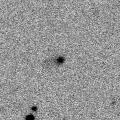
|
It continues brightening even after the perihelion passage. Now it is 17.0 mag (Sept. 23, ATLAS Chile). It stays 18 mag for a while. In the Northern Hemisphere, it will never be observable after this. In the Southern Hemisphere, it stays observable in good condition.
Date(TT) R.A. (2000) Decl. Delta r Elong. m1 Best Time(A, h)
Oct. 11 1 5.54 -68 55.9 5.362 5.690 104 17.3 23:42 ( 0,-14)
Oct. 18 0 44.91 -68 43.8 5.435 5.715 101 17.4 22:55 ( 0,-14)
|
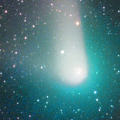
|
It brightened up to 8 mag from 2022 summer to 2023 spring. Now it is 17.2 mag (Sept. 28, Alfons Diepvens). It stays 18 mag for a while. In the Northern Hemisphere, it stays observable in good condition. It locates somewhat low in the Southern Hemisphere.
Date(TT) R.A. (2000) Decl. Delta r Elong. m1 Best Time(A, h)
Oct. 11 6 19.15 28 44.0 9.443 9.721 103 17.4 4:38 (320, 82)
Oct. 18 6 18.06 28 57.0 9.378 9.771 110 17.4 4:33 ( 0, 84)
|
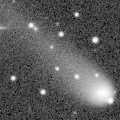
|
Now it is 17.1 mag (Sept. 2, Andrew Pearce). It stays 18 mag for a while. It stays extremely low in the Northern Hemisphere. In the Southern Hemisphere, it stays observable in good condition.
Date(TT) R.A. (2000) Decl. Delta r Elong. m1 Best Time(A, h)
Oct. 11 5 52.49 -44 37.2 8.140 8.333 97 17.4 4:34 ( 0, 10)
Oct. 18 5 48.80 -45 18.7 8.140 8.378 100 17.4 4:03 ( 0, 10)
|
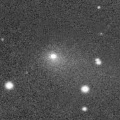
|
It brightened rapidly up to 14.6 mag in winter (Jan. 31, Thomas Lehmann). Now it is 17.1 mag (Sept. 22, ATLAS South Africa). Fading gradually. It will be fainter than 18 mag in November. It stays extremely low in the Northern Hemisphere. In the Southern Hemisphere, it stays observable in good condition.
Date(TT) R.A. (2000) Decl. Delta r Elong. m1 Best Time(A, h)
Oct. 11 3 0.12 -44 51.3 2.402 3.052 122 17.5 1:43 ( 0, 10)
Oct. 18 2 51.88 -47 1.7 2.486 3.114 120 17.6 1:07 ( 0, 8)
|

|
Now it is 17.7 mag (June 26, ATLAS Chile). It stays 18 mag for a while. It will be getting higher gradually.
Date(TT) R.A. (2000) Decl. Delta r Elong. m1 Best Time(A, h)
Oct. 11 9 20.70 -7 14.8 4.240 3.767 55 17.7 4:38 (301, 26)
Oct. 18 9 22.74 -6 51.9 4.155 3.780 61 17.7 4:44 (307, 31)
|

|
It brightened up to -3 mag due to the forward scattering in the SOHO coronagraph images (Oct. 9, 2024, Q.-c. Zhang, Charles S. Morris). It became a great comet of 0 mag on the ground. Now it is 17.2 mag (Sept. 21, D. Buczynski). Fading slowly. It will be fainter than 18 mag soon. In the Northern Hemisphere, it will be getting lower gradually. It locates somewhat low in the Southern Hemisphere.
Date(TT) R.A. (2000) Decl. Delta r Elong. m1 Best Time(A, h)
Oct. 11 17 55.89 15 38.4 5.554 5.391 75 17.7 18:54 ( 67, 53)
Oct. 18 17 57.57 14 54.7 5.714 5.462 70 17.8 18:45 ( 70, 50)
|
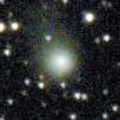
|
It brightened up to 12.1 mag in 2023 spring (May 20, 2023, Jose Guilherme de S. Aguiar). Now it is 17.4 mag (Mar. 25, ATLAS South Africa). It stays 18 mag for a while. It stays observable in good condition.
Date(TT) R.A. (2000) Decl. Delta r Elong. m1 Best Time(A, h)
Oct. 11 6 41.99 -19 26.8 8.057 8.171 93 17.7 4:38 (347, 34)
Oct. 18 6 41.04 -19 44.3 8.015 8.218 98 17.7 4:44 (357, 35)
|
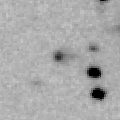
|
Now it is 17.8 mag (Sept. 21, Alfons Diepvens). It stays 18 mag for a while. It will be unobservable in November in the Southern Hemisphere, or in December in the Northern Hemisphere. But it will be observable again in January in the Northern Hemisphere.
Date(TT) R.A. (2000) Decl. Delta r Elong. m1 Best Time(A, h)
Oct. 11 17 11.89 5 22.4 5.435 5.058 62 17.7 18:54 ( 65, 39)
Oct. 18 17 17.53 4 38.3 5.498 5.045 58 17.7 18:45 ( 67, 36)
|
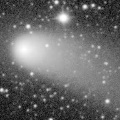
|
It brightened up to 9.6 mag from February to March in 2024 (Feb. 25, 2024, Thomas Lehmann). Now it is 17.9 mag (Sept. 17, Ken-ichi Kadota). It stays 18 mag for a while. In the Northern Hemisphere, it stays observable in good condition. It stays extremely low in the Southern Hemisphere.
Date(TT) R.A. (2000) Decl. Delta r Elong. m1 Best Time(A, h)
Oct. 11 22 55.88 40 53.3 6.041 6.790 135 17.7 21:35 (180, 84)
Oct. 18 22 53.24 40 1.4 6.123 6.848 133 17.8 21:05 (180, 85)
|
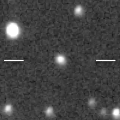
|
Although it is around 20 mag usually, now it is bright in outburst. Now it is 17.2 mag (Sept. 30, ATLAS-MLO, Mauna Loa). It stays 18 mag for a while. In the Northern Hemisphere, it stays observable in good condition. It stays extremely low in the Southern Hemisphere.
Date(TT) R.A. (2000) Decl. Delta r Elong. m1 Best Time(A, h)
Oct. 11 3 9.88 38 25.5 8.125 8.889 137 17.8 1:53 (180, 86)
Oct. 18 3 7.64 38 30.2 8.056 8.879 143 17.7 1:23 (180, 86)
|
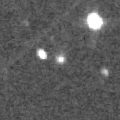
|
Now it is 17.5 mag (Sept. 23, ATLAS-MLO, Mauna Loa). It stays 18 mag for a while. In the Northern Hemisphere, it will be getting lower gradually. In the Southern Hemisphere, it will never be observable after this.
Date(TT) R.A. (2000) Decl. Delta r Elong. m1 Best Time(A, h)
Oct. 11 16 44.96 43 12.7 5.452 5.206 70 17.8 18:54 (118, 49)
Oct. 18 16 49.81 41 32.2 5.504 5.221 68 17.8 18:45 (116, 46)
|
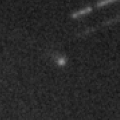
|
Now it is 17.6 mag (Sept. 29, ATLAS Chile). It stays 18 mag for a while. In the Northern Hemisphere, it will never be observable after this. In the Southern Hemisphere, it stays observable in good condition.
Date(TT) R.A. (2000) Decl. Delta r Elong. m1 Best Time(A, h)
Oct. 11 20 22.83 -56 31.6 2.666 2.923 94 17.8 19:03 ( 0, -1)
Oct. 18 20 20.45 -57 11.2 2.754 2.907 88 17.8 18:45 ( 2, -2)
|

|
Now it is 17.8 mag (Mar. 17, ATLAS Chile). It stays 18 mag for a while. It stays observable in good condition.
Date(TT) R.A. (2000) Decl. Delta r Elong. m1 Best Time(A, h)
Oct. 11 7 54.37 -10 5.9 4.300 4.184 76 17.8 4:38 (323, 37)
Oct. 18 7 58.26 -10 53.1 4.223 4.194 81 17.8 4:44 (331, 39)
|

|
Now it is 18.1 mag (Sept. 17, ATLAS-HKO, Haleakala). It stays 18 mag for a while. It stays observable in good condition.
Date(TT) R.A. (2000) Decl. Delta r Elong. m1 Best Time(A, h)
Oct. 11 7 4.57 9 4.7 3.985 4.127 91 17.9 4:38 (325, 60)
Oct. 18 7 7.24 8 31.4 3.893 4.137 97 17.8 4:44 (340, 62)
|
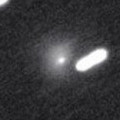
|
It brightened in major outburst of 5 mag. Now it is 18.1 mag (Oct. 11, John Maikner). It stays 18 mag for a while. It will be getting lower gradually.
Date(TT) R.A. (2000) Decl. Delta r Elong. m1 Best Time(A, h)
Oct. 11 19 44.89 -3 10.4 14.777 14.975 99 17.9 18:54 ( 12, 51)
Oct. 18 19 45.24 -3 16.5 14.904 14.989 93 17.9 18:45 ( 19, 50)
|

|
Fading slowly. It will be fainter than 18 mag in December. In the Northern Hemisphere, it stays observable in good condition. It locates somewhat low in the Southern Hemisphere.
Date(TT) R.A. (2000) Decl. Delta r Elong. m1 Best Time(A, h)
Oct. 11 3 35.55 43 16.4 1.527 2.307 130 18.0 2:19 (180, 82)
Oct. 18 3 19.35 43 7.6 1.482 2.327 138 17.9 1:36 (180, 82)
|

|
Now it is 16.5 mag (Oct. 3, ATLAS Chile). Fading gradually. It stays observable in good condition.
Date(TT) R.A. (2000) Decl. Delta r Elong. m1 Best Time(A, h)
Oct. 11 0 17.06 3 42.9 1.644 2.628 167 18.0 22:56 ( 0, 59)
Oct. 18 0 13.14 3 9.2 1.692 2.649 159 18.1 22:25 ( 0, 58)
|
|
![]()
 C/2025 J1 ( Borisov )
C/2025 J1 ( Borisov ) 48P/Johnson
48P/Johnson C/2023 H1 ( PanSTARRS )
C/2023 H1 ( PanSTARRS ) C/2023 U1 ( Fuls )
C/2023 U1 ( Fuls ) C/2017 K2 ( PanSTARRS )
C/2017 K2 ( PanSTARRS ) C/2019 U5 ( PanSTARRS )
C/2019 U5 ( PanSTARRS ) C/2024 J2 ( Wierzchos )
C/2024 J2 ( Wierzchos ) C/2024 X2 ( ATLAS )
C/2024 X2 ( ATLAS ) C/2023 A3 ( Tsuchinshan-ATLAS )
C/2023 A3 ( Tsuchinshan-ATLAS ) C/2020 K1 ( PanSTARRS )
C/2020 K1 ( PanSTARRS ) C/2024 G4 ( PanSTARRS )
C/2024 G4 ( PanSTARRS ) C/2021 S3 ( PanSTARRS )
C/2021 S3 ( PanSTARRS ) C/2023 RS61 ( PanSTARRS )
C/2023 RS61 ( PanSTARRS ) C/2024 N3 ( Sarneczky )
C/2024 N3 ( Sarneczky ) C/2025 L2 ( MAPS )
C/2025 L2 ( MAPS ) 242P/Spahr
242P/Spahr 276P/Vorobjov
276P/Vorobjov C/2013 C2 ( Tenagra )
C/2013 C2 ( Tenagra ) (3200) Phaethon
(3200) Phaethon 486P/2024 H1 ( Leonard )
486P/2024 H1 ( Leonard )![]()



























































